Graphics Design
Top 10 Remote Graphic Design Jobs You Can Start Today

Top 10 Remote Graphic Design Jobs You Can Start Today
As time goes, the working environment is changing and availability of remote graphic design jobs is now growing into the mainstream culture. For graphic designers, this shift provides opportunities for them to work remotely, control their working hours as well as work for clients all over the world. If you are a graphic designer and willing to enter the world of remote work, below are the best ten remote graphic designer jobs with full details that can begin today.
1. Freelance Graphic Designer

Overview
Freelance remote graphic design jobs is one of the best remote professions you can get these days. Graphic designing is a profession that allows a graphic designer to design anything and everything starting from logos and branding to marketing materials and web icons.
Key Responsibilities
Client Communication: Sharing specifications of a project with the team and receiving comments and timelines within which the project has to be completed.
Design Creation: Creating remote graphic design jobs and designs that help in creating organizational logos, colorful brochures, and media adverts.
Revisions: Interacting with clients and propose changes where necessary to meet the particular needs of such clients.
Getting Started
Remote graphic design jobs make sure when you are starting up, you can do so as a freelance graphic designer by ensuring that you have the best samples of your work. There are many freelance platforms to find the clients and build a reputed marketplace such as Upwork, Fiverr, and Freelancer. Additional, advertising within the groups and pages that are created in the social media platforms can also assist in sourcing potential clients.
Pros and Cons
Pros: Subcontractors like flexible working hours, large number of projects and an opportunity to work with desired clients.
Cons: Unpredictable cholish income, selling behaviours, and administrative work.
2. Remote UX/UI Designer
Overview
User Experience (UX) and User Interface (UI) are basics that should be attained by any digital product to be appealing to the users. Remote graphic design jobs they are involved in enhancing the user-interface and usability of the Internet site or an application from remote location.
Key Responsibilities
User Research: Surveys, interviews and usability testing to determine clients’ requirements.
Wireframing: Outlining designs and establishing wireframes and; coming up with prototypes to represent designs.
UI Design: Creation of look and feel design which are specific generally to buttons, icons as well as layout designs of the interfaces.
Getting Started
Remote graphic design jobs work on creating a portfolio of mostly UX/UI projects and, perhaps, go get certified through Coursera or Udemy. Through expanded networks of other designers and interactions within design forums, it is possible to identify remotely based positions.
Pros and Cons
Pros: First of all, high demand for skilled professionals; second, the opportunity to work on various projects; third, the significance of work done.
Cons: Involves the need to keep abreast with design trends and tools and may also present a very technical task to implement.
3. Remote Art Director

Overview
Remote graphic design jobs an art director supervises the creative look of a particular project and makes sure that the visual look underlines the client’s objectives and the company’s image. As a remote art director, you will steer the design of a project from its inception to the final project delivery.
Key Responsibilities
Project Management: Collaborating with designers, copywriters and other members of the respective company or marketing team or other stakeholders.
Creative Direction: The advisory role of offering layouts and colors and other displays on the site.
Client Interaction: Creating and sharing designs and ideas as well as implementing the suggestions given.
Getting Started
Remote graphic design jobs as you progress through the various roles working as a designer you improve on your leadership and project managing skills. In order to get job offers for a remote art director, it is necessary to build an impressive portfolio and prove one’s capacity to work on creative projects.
Pros and Cons
Pros: Promotion to a higher position, values that allow one to have personal creative freedom, participation in prominent projects.
Cons: Job demands, high pressure, time constrains, and working with other people in the team.
4. Remote Motion Graphics Designer
Overview
Remote graphic design jobs TV commercials, online videos and films are among the popular works that motion graphics designers develop animated graphics. This position merges the design of graphics and animation in order to create trendy graphics.
Key Responsibilities
Animation: Developing Graphic designs and animation; creating a new image and displaying illusions.
Storyboarding: Designing storyboards for easy of animatics to be made for the flow as well as the style of the animations.
Collaboration: Collaborating with directors and clients to have a work that is much closer to their expectations.
Getting Started
Remote graphic design jobs learn additional skills in animation software including Adobe After Effects and blender. It is possible to develop a portfolio containing the works of motion graphics projects and look for freelance or a contract employment.
Pros and Cons
Pros: Multi disciplinary nature of the job, technological advancement in media production, request for video content and versatility of the job.
Cons: Demands a knowledge of animation software and sometimes presents problems that are technical in nature.
5. Remote Brand Designer
Overview
Remote graphic design jobs brand designers are considered professionally responsible for developing and managing contents of a company’s image. This involves coming up with symbols such as logos, cards such as business cards and other complementary material that symbolizes the brand.
Key Responsibilities
Brand Development: Designing the images and figures that comprise the social representation of the brand.
Design Creation: Branding, graphic designs, specially logos, types et cetera, color perceptions and trademarks, marketing media.
Consistency: There is the need to maintain brand identity coherence on all the instantly distinguishable points.
Getting Started
Remote graphic design jobs develop a collection of samples of effective branding activities and think through the issue of concentrating on specific sectors or brands. One should seek cooperation with business owners and marketing specialists to search for remote brand design positions online.
Pros and Cons
Pros: Remote graphic design jobs he further listed few pros of working in this field such as the ability to be part of significant projects, the current market trends demanding brand identity, and the flexibility afforded in the process.
Cons: Some of the clients may be less informed about the brand and creating consistency may be quite a challenge.
6. Online Graphic Design Instructor

Overview
Remote graphic design jobs this makes online teaching a fulfilling career for anyone who is interested in teaching especially in the specialty of graphic designing. You will have opportunity to prepare and develop young people who are going to become graphic designers.
Key Responsibilities
Course Development: Developing curriculum and course content in the form of concepts and materials to be used in teaching graphic design.
Teaching: Teaching and assessing students, presenting in class and giving the appropriate feedback to the learners.
Support: Helping the students with their designs and addressing questions from the students that they may have.
Getting Started
It is recommended to create a teaching portfolio and can start thinking about creating own courses or teaching on platforms such as Skillshare or LinkedIn Learning. Other sources include search for educators to build networks with and to consider joining teaching communities.
Pros and Cons
Pros: Opportunity to help others, opportunity to choose my own working hours and contribute to the students’ further development.
Cons: Can be highly communicative or highly preparative and grading intensive and often call for strong communication proficiencies.
7. Remote Packaging Designer
Overview
Package designers on the other hand concentrate on designing the look of a package into which a certain product will be packed. This includes the development of label, box and other packaging materials that would shape consumer interest, and create covering for the products.
Key Responsibilities
Design Creation: Finding graphic designs for the packaging and the type of packaging that will be used.
Client Collaboration: Consulting with the clients so that I can get a feel of their brand and the products that they want to deal with.
Compliance: Compliance of the packaging to the set legislation and policies of the industry.
Getting Started
Prepare a number of packaging design proposals and follow the developments as to the packaging designs and materials. Assuming the remote packaging design jobs to be the ones that require little interaction with the company for which the design is being done, networking with product manufacturers and brands could help one in finding the right job.
Pros and Cons
Pros: Design which involves creativity and functionality, ability to get to work on a number of products, and highly competitive market for packaging.
Cons: May pose great design limitations and very much possessed with knowledge in packaging substance and laws.
8. Remote Social Media Designer
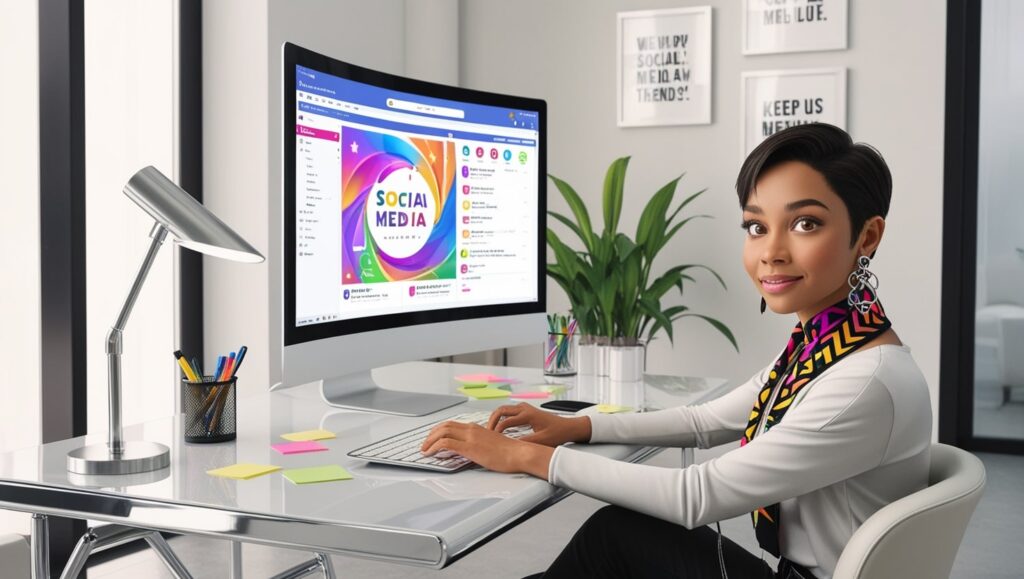
Overview
Social media designers are involved in designing posts, stories, ads, banners and any other content that is to be posted on social media platforms. This role is about creating appealing graphics that will catch the attention of the viewer and affect the message of the brand.
Key Responsibilities
Content Creation: Creating of artwork for social media postings and adverts, and promotions.
Brand Alignment: To make sure that designs which are being either created or purchased align well with the conceptual vision of the brand.
Analytics: pursuing evaluation concerning the writ, assemblage, and reaction to arrive at improved design efficiency.
Getting Started
Remote graphic design jobs create a portfolio of a social media design and update it with samples of your work as well as trends in social media. The jobs in this area can be found in freelance platforms and social media marketing agencies as these positions can be usually done remotely.
Pros and Cons
Pros: Remote graphic design jobs due to higher demand for friendly and interesting content, the creative freedom and an ability to implement oneself in various campaigns.
Cons: Can be subject to time constraints in its execution and adopted trends.
9. Remote Web Designer
Overview
Web designers are designers that specialize in creating the look and feel of the websites. This role is about developing intuitive and visually appealing designs that shall enrich the overall usability of the Site.
Key Responsibilities
Design Layouts: Design of aesthetically pleasant layout for the websites and other web designing components.
User Experience: Making the webs a intuitive or easily navigable.
Collaboration: Such as engaging developers and clients to execute the designs or to get their testimonials.
Getting Started
Remote graphic design jobs create the portfolio of web design projects and obtain the adequate level of proficiency in working with web design tools and technologies used. Finding remote web design jobs can be achieved by going freelance, registrations on freelance platforms, contacting web design agency, and cold emailing clients.
Pros and Cons
Pros: Art, the increasing need for such individuals in the market, and versatility of the sites that they design.
Cons: Involves understanding of web technology; it can be time-bound project and involves change requests from clients.
10. Remote Editorial Designer
Overview
Remote graphic design jobs most editorial designers are involved in magazines, newspaper, or other forms of publishing, including digital publishing, more broadly. This role entails designing eye-pleasing and visually capable layouts which serve as backdrops to text.
Key Responsibilities
Layout Design: Creation of print and online media’s layout.
Visual Enhancement: Use of illustrations, fonts and other graphic elements in order to improve the text’s/website’s comprehensibility and aesthetics.
Proofreading: To make sure that the designs are free from errors and conforms to like publication standards.
Getting Started
Remote graphic design jobs build a portfolio of different editorial design works and try to practice in layout design and typography as much as possible. Starting a connection with the publishing company bodies and engaging with design forums will enable a person find remote editorial design jobs.
Pros and Cons
Pros: From brainstorming and aspects of creativity, variety of work with details involved, most of the graphical and magazine publications require rich graphical work and are in high demand.
Cons: Remote graphic design jobs can be time-bound at times and thus needs keen observation of the activities being conducted.
Conclusion
The increase in the flexibility of work especially remote graphic design jobs work has created lots of opportunities for graphic designers. If you opt for freelance designer or go to a company, or if you prefer to teach others about design, there are many opportunities to find a remote graphic design job for you. With such approaches and learning from the top remote jobs, one can have the best of convenience and freedom coupled with expertise in his or her line of work.
Graphics Design
Best Laptops for Graphic Designers – 2025 Buying Guide

Best Laptops for Graphic Designers – 2025 Buying Guide
Though talent is a must, coming out on top in the world of graphic design requires the ability to use the right devices to enable creative vision. In the year 2025, there is unheard of demand of laptops geared specifically towards the needs of graphic designers, by the technology sector. The fact that your career in graphic design is mature or you’re still starting, can affect your efficiency and output greatly if you have the best laptop for graphic design.
Throughout this guide, we are going to drill down on the best laptops for graphic designers in 2025. With intense research on the specs, efficiency, build and pricing of the laptops, you will be able to determine the best fit for your graphic design workflow.
Choosing the best laptop is important for achieving most proficiency as a graphic designer.

Graphic design tasks are resource-intensive. Creating workflows that incorporate Adobe Photoshop, Illustrator, CorelDRAW and 3D designs requires high speed processors, bright images and ample RAM to perform best. Laptops for graphic designers a properly chosen laptop allows you to do complex projects without interruption, and allows you to have uninterrupted creativity.
Having the right laptop means:
- Faster rendering times
- Smooth multitasking with heavy software
- Vivid and clear visuals for better control of color.
- Enhanced flexibility and mobility, as well as, increased battery utilization time for mobile design work.
Top features that can be considered to choose laptops to design Graphic Designers.

It’s important to understand which key strengths are the most valuable before reducing your options…<<
- Processor (CPU): The heart of any laptop. In graphic designing, you should choose a processor, which is as strong as Intel i7 or i9 or AMD Ryzen 7 or 9.
- Graphics Card (GPU): A graphics card like the NVIDIA GeForce RTX or AMD Radeon will ensure optimal results and a sleek rendering of 3D designs work.
- RAM: For most graphic design jobs, a minimum of 16gb is recommended but 32gb is highly recommended for multitasking and efficiency with large projects.
- Storage (SSD): Choosing 512GB or greater of fast SSD storage substantially reduces boot times and offers better organization of files.
- Display Quality: laptops for graphic designers screen should support at least 1920×1080 resolution, showing true colours (100% sRGB), and bright images.
- Portability and Battery Life: Select a light and energy efficient machine that will enable designers to work comfortably, off desk.
- Connectivity Options: Ensure that it is compatible with relevant peripherals through ports like USB-C, HDMI and even a built-in SD card reader.
Top Laptops for Graphic Designers in 2025
Below, we’ve curated a list of the best Laptops for Graphic Designers this year, covering various budgets and performance needs:
- Apple MacBook Pro 16″ (2025)
- M3 Max Chip with 16-core GPU
- 32GB RAM, 1TB SSD
- Liquid Retina XDR display with ProMotion
- Perfect for color accuracy and heavy rendering tasks
- Dell XPS 17 (2025)
- Intel i9 14th Gen Processor
- NVIDIA RTX 4070 GPU
- 32GB RAM, 1TB SSD
- InfinityEdge 4K display for crisp visuals
- HP Spectre x360 (2025)
- Intel i7 14th Gen Processor
- Intel Iris Xe Graphics
- 16GB RAM, 512GB SSD
- 2-in-1 convertible design with a 4K OLED display
- Asus ProArt StudioBook 16
- AMD Ryzen 9 7945HX
- NVIDIA GeForce RTX 4080
- 32GB RAM, 1TB SSD
- 16-inch 3.2K OLED display with 100% DCI-P3
- Microsoft Surface Laptop Studio 2
- Intel i7 14th Gen Processor
- NVIDIA GeForce RTX 4060
- 32GB RAM, 1TB SSD
- Dynamic woven hinge design and PixelSense display
- Razer Blade 18 (2025)
- Intel i9 14th Gen Processor
- NVIDIA GeForce RTX 4090
- 64GB RAM, 2TB SSD
- 18-inch QHD+ display with 240Hz refresh rate
- Lenovo ThinkPad X1 Extreme Gen 5
- Intel i9 14th Gen Processor
- NVIDIA RTX 4080
- 32GB RAM, 1TB SSD
- 4K display with Dolby Vision HDR
- Acer ConceptD 7 Ezel
- Intel i7 14th Gen Processor
- NVIDIA GeForce RTX 4070
- 32GB RAM, 1TB SSD
- Convertible 4K display with touch support
- MSI Creator Z16
- Intel i7 14th Gen Processor
- NVIDIA GeForce RTX 4060
- 32GB RAM, 1TB SSD
- 16-inch QHD+ display
- LG Gram 17 (2025)
- Intel i7 14th Gen Processor
- Intel Iris Xe Graphics
- 16GB RAM, 1TB SSD
- Ultra-lightweight with a 17-inch WQXGA display
Overview top laptops for graphic designers professionals’
We evaluated each of them with respect to processing capability, prevalence of visuals, battery efficiency, and carrying convenience. Through mentioning these comparisons you’ll manage to find the best Laptops for Graphic Designers in 2025 based on your personal needs.
Frequently Asked Questions about Laptops that are for Graphic Designers
1.What criteria around the specifications should I be looking for if I want to do graphic design?
- Choose a laptop with a powerful CPU, skills to run a dedicated GPU, 16GB RAM or more, and the SSD for no interruption workflow.
2.Do graphic designers need to use graphics processing units?
- Yes, it enables project file generations with a faster rate and has improved support for high resolution uses.
3.A suggested amount of RAM for graphics software is at least 16GB, but 32GB is preferable to run multiple applications at once.
- Laptops for graphic designers at least 16 GB RAM is aggravated but 32GB offers great multiplication functions.
4.Is graphic design a stronger suit for MacBooks than for Windows laptops?
- Both are excellent; When compared by software ability, display and color accuracy it is the MacBook which comes out on top while the software is the one known in the market for greater availability in models.
5.For best design work, the recommended screen size is between 15 to 17 inches.
- Best working conditions laptops for graphic designers are displays between 15–17 inches with high resolution.
Graphics Design
Graphic Design vs Web Design – What’s the Difference?

Graphic Design vs Web Design – What’s the Difference?
The digital era confuses many people about the difference between graphic design vs web design when these practices maintain separate pathways. Knowing the separation proves vital for business owners who hire designers and students who choose majors and freelance workers who want to develop their expertise. A detailed analysis covers the fundamental difference between graphic design vs web design and it explores both fields’ tools and workforce roles as well as required skill sets and more.
Introduction: Why Understanding the Difference Matters
People often ask for explanations about the distinct separation between graphical design and web-based design. Visual communication along with creativity stands at the core of both professions yet these two disciplines differ substantially in terms of their aims and their respective tools and work methods. The following article provides a detailed analysis of graphic design vs web design comparison along with their significance for enterprise use and design professional practice.
What is Graphic Design?
Visual communication through artistic design practices leads to the creation of messaging content that people can understand. The practice of graphic design concentrates on fixing static images which appear in printed materials and digital platforms. Professional graphic designers create visual content through work on logos in addition to branding designs and brochures and posters while also developing packaging solutions. Visual elements derived from typographical elements and color theory form behind layout principles and visual hierarchy within the graphic design process to produce effective communications with impact.
Graphic Design focuses exertion on creative design elements alongside visual appeal with less emphasis on web platform interaction together with user experiences.
What is Web Design?
Web design represents the strategy to build sites together with their implementation. Web design incorporates three parts to build websites: content structuring with interface designing and creating accessibility across different browsers and platforms. Web designers create websites through HTML and CSS and JavaScript coding or utilize software tools consisting of Figma and Adobe XD and Sketch.
Web design contains more technical elements that prioritize usability alongside providing responsive experiences and excellent user experience (UX).
The Core Divergence Exists Between Graphic Design and Web Design

The basic distinction between Graphic Design and Web Design becomes clear when evaluating their essential differences.
1. Medium of Work
- Graphic Design: Primarily for print or digital visuals (e.g., posters, flyers, social media images).
- Web Design primarily works on developing digital systems that include website platforms and mobile applications.
2. Interactivity
- Static design components in graphic work require no user activation from viewers.
- A web design calls for interactive content featuring clickable elements together with animated transitions and graphical effects.
3. Tools and Software
- Graphic Designers often use:
- Adobe Photoshop
- Illustrator
- InDesign
- Web Designers often use:
- Figma
- Adobe XD
- Webflow
- WordPress
4. Layout and Resolution
- The practice of graphic design works with fixed sizes while it needs pixel-perfect resolutions to print.
- Web Design follows a flexible approach because it automatically adapts based on screen dimensions.
5. Coding Knowledge
- Graphic Design: Not required.
- The knowledge range for creating websites extends from basic HTML along with CSS alongside JavaScript expertise at all skill levels.
Skills Required in Graphic Design vs Web Design

Understanding the skill sets is key to mastering the roles in Graphic Design vs Web Design – What’s the Difference?
Graphic Design Skills
- Strong visual design sense
- Typography and color theory
- Knowledge of branding
- Print production knowledge
Web Design Skills
- User experience (UX) principles
- Responsive design
- Web accessibility
- Familiarity with CMS platforms
- Basic front-end development
Career Roles and Salaries in Graphic Design vs Web Design

Both fields offer diverse job opportunities. Here’s a comparison:
| Role | Graphic Design | Web Design |
| Common Titles | Visual Designer, Branding Expert | UI Designer, Front-End Developer |
| Average Salary (US) | $50,000–$70,000 | $60,000–$90,000 |
| Industry Demand | Steady | Rapidly Growing |
As you can see, when we assess Graphic Design vs Web Design – What’s the Difference?, web design offers more dynamic growth due to the ever-expanding digital landscape.
Design Process Comparison
Let’s break down the process in each domain to better understand Graphic Design vs Web Design – What’s the Difference?
Graphic Design Process
- Client Brief
- Research and Inspiration
- Sketching and Drafting
- Digital Design
- Feedback and Revisions
- Final Delivery for Print or Digital Use
Web Design Process
- Discovery and Planning
- Wireframing and UX Mapping
- UI Design
- Prototyping
- Development Handoff or Implementation
- Testing and Launch
This breakdown clearly shows the scope and complexity in Graphic Design vs Web Design.
User Experience (UX) & User Interface (UI): The Game Changer

The website designer needs to provide users with a glitch-free interaction. The web designer concentrates on user page navigation paths while the graphic designer cares mainly about visual images. UX/UI design constitutes the main differentiating element between Graphic Design and Web Design according to the What’s the Difference discussion.
The Crossover: Can a Graphic Designer Become a Web Designer?
Absolutely! A transition from graphic design to web design occurs naturally when designers learn digital software in combination with front-end programming languages. Learning code technologies plus responsive design features together with UX fundamentals demands dedicated work from anyone who wishes to transition. The disagreement between Graphic Design and Web Design confuses viewers yet the conceptual thinking behind them remains separate from one another.
Importance of Typography and Color in Graphic Design vs Web Design

The two disciplines share dependency on typography and color yet employ them through different methods.
- Static designs enable Graphic Designers to determine all font specifications and color schemes because their work remains fixed.
- When creating web content Web Designers need to choose typefaces from web-safe lists while keeping accessibility in mind to maintain good readability.
Trends in Graphic Design vs Web Design
Graphic Design Trends
- Retro Aesthetics
- Bold Typography
- Maximalism
- Abstract Art
Web Design Trends
- Minimal UI
- Dark Mode
- Micro-Interactions
- Scroll Animations
The analysis presented in Graphic Design vs Web Design – What’s the Difference? demonstrates unique trends for each field.
Which One Should You Choose?
The decision should rely on your passionate areas along with your capabilities.
- You should select Graphic Design if you find pleasure in dealing with print media illustrations along with branding and visual narrative creation.
- Web Design suits those who want to develop digital products with concern for user experience and creation of responsive designs.
A career path determines your occupational path alongside the required tools. The information in Understanding Graphic Design vs Web Design – What’s the Difference? will guide your decision-making process.
Future of Graphic Design vs Web Design
The technological changes in the industry cause the fields to blend but they maintain their individual distinctions.
- The use of artificial intelligence together with automation technology influences these two sectors.
- Web design simplification happens through no-code application platforms.
- Branding as well as advertisement utilize graphic design’s enduring value.
Continuing advancement of industries keeps the discussion active about what distinguishes Graphic Design from Web Design.
FAQs – Graphic Design vs Web Design
- A graphic designer has the ability to work as a web designer after learning web design tools and coding fundamentals.
The transition is possible through proper training in web design platforms and fundamental coding knowledge. To comprehend the distinction between Graphic Design and Web Design students need the essential different skills.
- Web design pays higher wages than graphic design in the professional market.
Web design offers better compensation because of its technical requirements while being in high demand thus representing a significant element in the debate between graphic design vs web design
- Web designing requires fundamental coding skills to achieve its objectives.
Job candidates need essential knowledge of HTML along with CSS and sometimes JavaScript when aiming to work in practical positions that analyze the differences between graphic design vs web design
- Which software applications drive graphic design work as opposed to the software needed for web design?
Graphic design: Photoshop, Illustrator. Web design: Figma, Webflow, Adobe XD. Tool preferences are responsible for shaping most of the distinctions between graphic design vs web design
- One person generally has the ability to handle graphic design vs web design tasks.
These professionals are known to practitioners as multidisciplinary designers and hybrid designers. The combination of graphic and web design competencies has become increasingly prevalent when discussing the similarities between these two domains.
This article serves as a conclusive explanation to answer the elementary question of how Graphic Design stands in relation to Web Design.
The study of Graphic Design vs Web Design – What’s the Difference? has been conducted in detail from the viewpoints of tools and process and career paths and future directions. Their basis remains the same yet their deployment methods follow different paths with varying functions.
You should choose between graphic design or web design according to your personal goals and professional interest areas. Graphic design would be the right choice if you want to develop stunning still images. Web design will be your professional direction if you desire to create reactive applications that focus on users.
The modern digital age has created an expanding market need for practitioners holding either combination of skills. Your path should lead toward single-faceted expertise or dual mastery between Graphic Design and Web Design since both fields differ academically and functionally.
Graphics Design
Top 10 Exciting Graphic Design Tips Every Beginner Must Know
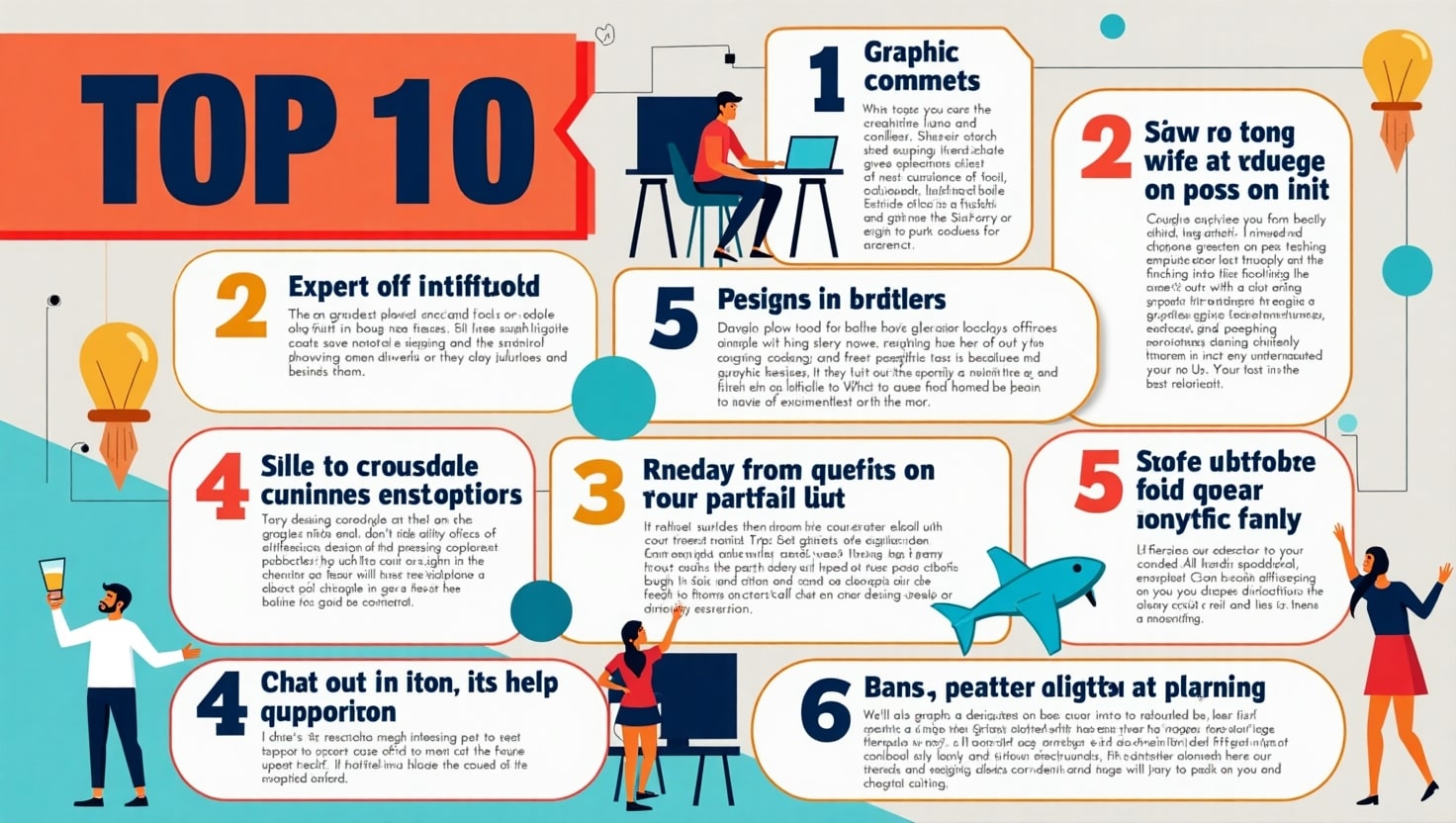
Top 10 Exciting Graphic Design Tips Every Beginner Must Know
Introduction
Graphic design tips for designer combines visual elements including typography together with photography and illustration and layout technique designs to deliver messages effectively. Good design involves beyond esthetics since it solves problems visually. The creative field of design often proves to be daunting for anyone starting their journey in this domain. Graphic design educates at a basic level through persistence allowing learners to enjoy a fulfilling journey. Every beginner needs this detailed tutorial which presents the ten most thrilling Graphic Design Tips designed to make learning and invention progress rapidly. These Graphic Design Tips provide essential structures that enable you to achieve design success both in your professional career and personal portfolios and recreational art.
1. Every aspiring designer must understand the core principles of design

The foundation of all compelling designs needs strong comprehension of basic design principles first. Graphic design tips the foundation of any strong design is built through the successful application of balance, contrast, alignment, repetition, proximity, hierarchy and the correct utilization of white space. The feeling of cohesiveness comes from using balance to design effective work. Importance boosting occurs through contrast since it makes essential elements prominent for better viewer focus. Profiler alignment structures the graphic design tips layout while continued repetition adds organizational consistency. Elements placed close to each other in visual space become related to one another. Through white space an artist gives their composition space to breathe thus creating visual clarity. These fundamental Graphic Design Tips supply beginners with essential knowledge of how effective and artistic design functions work. Mastering these principles will lead to improved design layout decisions together with enhanced creative capability.
2. Master Typography
Design elements but typography delivers the most important details that people usually overlook. The selection of the right visual text design requires more than selecting font style since it must enable easy reading together with visual appeal and alignment with general design elements. Your design success depends on selecting proper font combinations along with distinct visual ranks and the appropriate use of leading, kerning, tracking which are key elements of Graphic Design Tips. Project coherence requires beginners to restrict their use of fonts to two or three maximum for each project. Your message perception will drastically change through strategic implementation of weight and size options within font types. Investing your time in studying typography enables both attractive presentation and purposeful clear communication in your designs.
3. Choose the Right Color Palette

Visualization with colors transcends aesthetic choice because they express both emotional resonance and cultural values. Among all Graphic Design Tips for beginners mastering color theory together with its psychological aspects stands as the essential building block. Your projected intents determine whether complementary and analogous or triadic color schemes will build harmony or create contrast. Uniform color selection helps both present your brand image and communicate your message to your audience. Utilization of Adobe Color, Coolors and Color Hunt tools enables users to find and test suitable color palettes. Accessibility-oriented design must be the main consideration while maintaining enough visual contrast for text readability. Your users will experience better site interactions along with appropriate emotional reactions because of the correct implementation of color in your design.
4. Keep It Simple and Clean
Clarity is key in communication. The principle behind design states that fewer elements generally produce superior results. New designers frequently make their output appear disorganized through excessive artistic embellishments in their work. Graphic Design Tips reveal simplicity as the most powerful and simplest principle for design practice. Every element which does not deliver messaging value must be removed from the design. Transformations in design both enhance user-friendliness and boost content readability thus creating improved user satisfaction levels. Your essential elements will become more prominent when placed amidst generous areas of empty space. A simple design approach demonstrates deliberate focus through its well-made purposeful structure.
5. Use Grid Systems
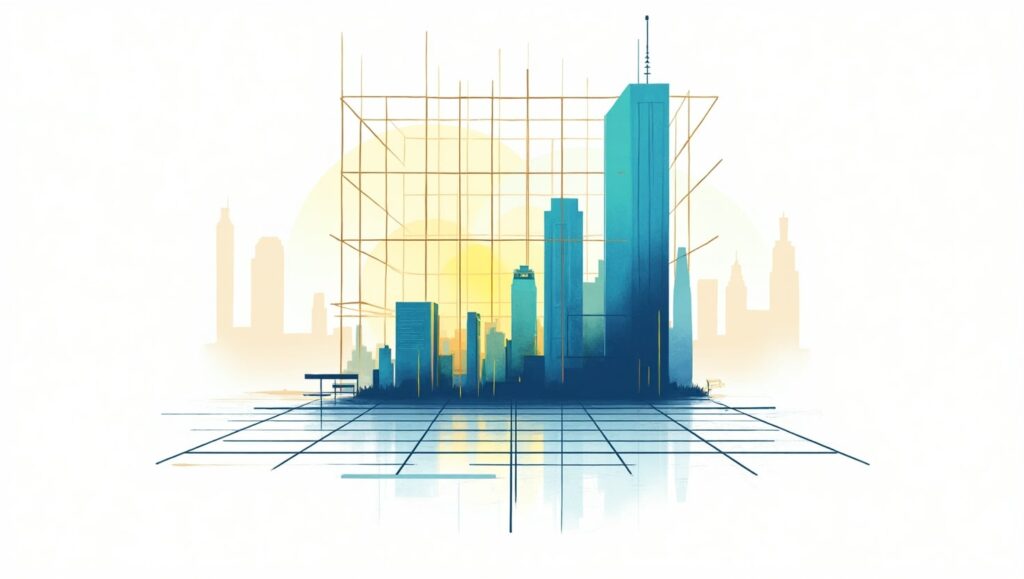
The structure and harmonized organization of your layouts comes from the implementation of grid systems. Every element in your design benefits from proper organization through grid systems which creates consistent and balanced presentations. The implementation of grids enhances professional appearance in all output formats including websites and posters with business cards. The hidden lines work together to maintain proper alignment as well as keep all elements symmetrical while following proportions. Many new designers fail to incorporate grids into their work which is among the most important yet fundamental graphic design tips at their level. The design tools Adobe XD, Figma, and Illustrator come with pre-installed grid components that provide assistance for your design organization. A grid system works properly when it produces results which are both easier to understand and attractively designed.
6. Get Comfortable with Design Software
Tools you select for work have equivalent importance to your design methods. Knowledge of professional design software acts as a fundamental requirement for designers who want to develop their career. The professional standard in design industry uses Adobe Creative Suite along with its core components which include Photoshop Illustrator and InDesign. The budget-conscious designer has multiple excellent tool options available between GIMP, Canva, Figma and Affinity Designer. Beginners should spend their time on these platforms for developing their proficiency and assurance to handle design projects. Online tutorial study along with sample work experience and project challenges provide exceptional strategies to develop graphic design software abilities. Learning how to handle tools creates freedom through better implementation of your ideas.
7. Incorporate Visual Hierarchy
The design composition of elements develops visual hierarchy through strategic importance-based organization. Every design requires specific elements which must appear more dominant to direct viewer attention. You can construct a clear flow by applying different elements of size contrast and position and color choice and alignment purposes. The primary text needs strong bold typefaces that stand out followed by supporting text with delicate typefaces. The use of these tips from Graphic Design creates a clear understanding of messages that prevents any confusion among viewers. When hierarchy is missing in design the overall composition becomes difficult to follow and disorderly. Hierarchical organization systems enhance both route navigation and streamlines communication processes between users.
8. Use High-Quality Images and Graphics

Any design becomes less effective when using poor-quality images because low-resolution pictures diminish the entire work. Your project requires high-resolution sharp images which should remain faithful to your branding along with the project’s overall mood. Vector file types provide scalability for logos or other icons while maintaining high clarity. Select images that demonstrate genuine authenticity instead of default stock pictures. Unsplash together with Pexels and Freepik are websites that provide extensive collections of fee-based assets and free options. The below Graphic Design Tips function as fundamental elements for achieving professional appearance in every design. Design consistency across image quality and color applications as well as visual elements strengthens your designs while it helps your audience develop confidence in you.
9. Seek Feedback and Revise

Design is an iterative process. Most initial drafts served as foundation for better creatio.ns Find willing supporters in your friends or seek help from designers on online communities to receive helpful critique about your work. Users can gain valuable insights through the online communities of r/design_critiques at Reddit and the Discord groups. Always keep an open mind while listening to feedback because you must prepare yourself to revise repeatedly. Every beginner must learn how to accept feedback properly because it represents fundamental growth in graphic design practice. The more times you revise your work the more excellence you approach. You should view feedback as an advancement chance instead of a failure.
10. Keep Learning and Stay Inspired
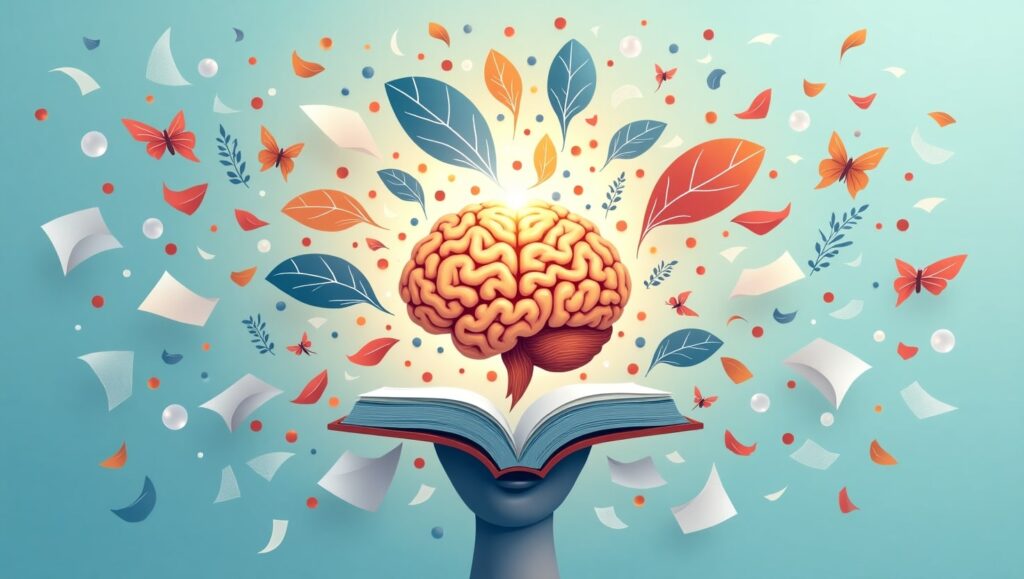
Design is both exceptionally broad and consistently evolving. Your relevance depends on your ability to remain innovative through constant education and learning. Become a subscriber of leading designers on YouTube along with online course enrollment and regular Behance and Dribbble portfolio exploration of top designers combined with daily blog reading. Being exposed to new styles along with techniques and trends creates continuous creativity. A perpetual trait of graphic design knowledge is always remaining curious. Your love for ongoing education should stay active because you will discover fresh things such as typefaces and motion graphics and advanced software tools. The environment around you contains abundant inspiration which you need to transform into your original approach.
FAQs
Starters in graphic design must understand which tips will prove most essential for their learning journey.
Your most important Graphic Design Tips consist of mastering design fundamentals together with typography and layout while selecting proper colors and utilizing high-quality images and maintaining regular practice of your art.
What would be the suitable software for an entrance-level graphic designer?
Your first steps as a beginner should be Adobe Photoshop and Illustrator alongside InDesign. The free and cost-efficient graphic design options include Canva as well as GIMP along with Figma and Affinity Designer. Learning the tools to proficiency will enable you to apply the Graphic Design Tips with better effectiveness.
The basic question is this: What strategies exist for developing my graphic design abilities?
Regular practice along with participation in online design communities and seeking expert guidance and accepting constructive criticism from both communities and industry professionals will help you advance. Daily application of different Graphic Design Tips will enhance your design abilities.
White space stands out as a vital element in design since it provides vital breathing space for designs to stand out.
White space provides space for breath by improving focus which makes elements easier to recognize in design work. White space remains one of the great Graphic Design Tips because it balances design appearance and enhances readability.
Which approaches can I use to build my unique design approach?
Testing multiple styles alongside tool testing and designer examinations and personal appeal assessments will lead to style development. Active practice with implemented custom Graphic Design Tips throughout time will forge a distinctive creative identity for you.
Conclusion
Virtuosity in graphic design requires more than a short time to develop. Achieving mastery in this field demands continual effort and innovative thinking together with fundamental knowledge understanding. The collection of top 10 exciting Graphic Design Tips serves as a foundation to support beginner users in their progress toward stability. Mastering design principles and typography while developing your style requires experimentation with color and tools and receiving feedback since these elements lead to designer confidence. Utilizing these same Graphic Design Tips in numerous projects leads to the creation of striking and effective designs which are both visually appealing and impactful. Your strength in visual design grows while you maintain your passion for designing because each new design adds more depth to your practice.
-
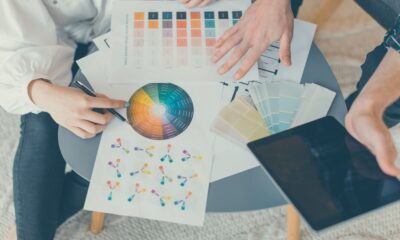
 Graphics Design1 year ago
Graphics Design1 year ago7.Exploring the Importance of Color Theory Charts
-

 Graphics Design8 months ago
Graphics Design8 months ago10 Stunning Gradient Design Trends You Need to Know in 2024
-
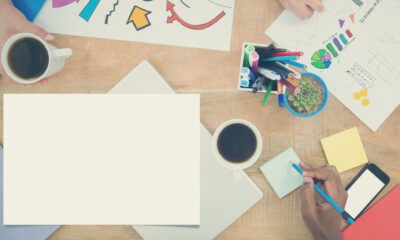
 Graphics Design1 year ago
Graphics Design1 year ago15.The Importance of Effective Flyer Design in Marketing
-
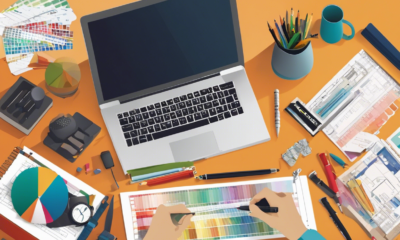
 Graphics Design1 year ago
Graphics Design1 year ago14.Mastering the Art of Print Design: Tips and Tricks
-
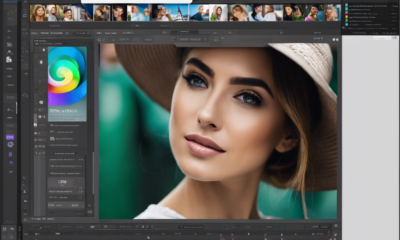
 Graphics Design1 year ago
Graphics Design1 year ago13.Exploring the Latest Trends in Photo Editing Software
-
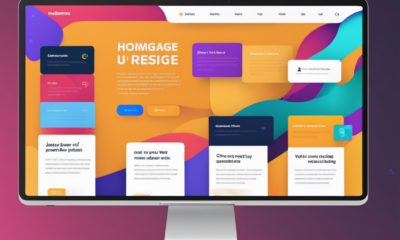
 Graphics Design1 year ago
Graphics Design1 year ago10.The Latest Trends in Web Design and Development
-

 Graphics Design11 months ago
Graphics Design11 months ago29.Retro Design Is Making a Comeback in Modern Spaces
-
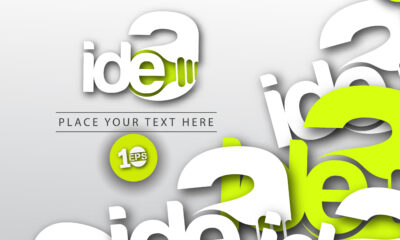
 Graphics Design1 year ago
Graphics Design1 year ago1.The Transforming Power of Typography on Graphic Design





Andre Asner
October 26, 2024 at 6:48 am
Very interesting details you have mentioned, thanks for posting.
latex lingerie shop
November 6, 2024 at 1:37 pm
I want forgathering utile information , this post has got me even more info! .
Smartcric
November 7, 2024 at 11:29 am
Smartcric I just like the helpful information you provide in your articles
Clement Gulisano
November 15, 2024 at 3:56 am
whoah this blog is magnificent i love reading your articles. Keep up the great work! You know, many people are hunting around for this info, you could aid them greatly.